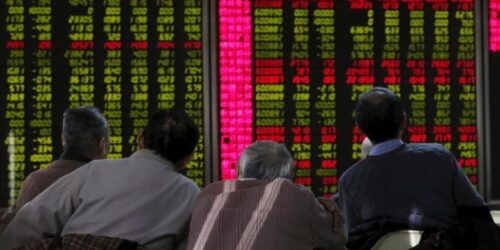Pakistan’s real effective exchange rate (REER) – the country’s cost of international trade – improved to 99.85 points on the index in June, making exports viable and imports expensive mainly due to depreciation in rupee against the basket of major trading partners’ currencies.
The real effective exchange rate below 100 means the country’s exports remain competitive and import expensive. The situation reverses when REER stands above 100 on the index, it was learnt.
“The improvement in real effective exchange rate would encourage exports from Pakistan and discourage unnecessary imports into the country,” Pak-Kuwait Investment Company (PKIC) Head of Research Samiullah Tariq said while talking to The Express Tribune.
“The situation should narrow down the current account deficit (the country higher foreign expenditures compared to income), which came significantly higher compared to market expectations at $1.6 billion in June alone,” he said.
It improved to below 100 reading on the index at the end of June 2021 after remaining above the level in the prior three successive months (Mar-May 2021), according to Pakistan’s central bank on Friday.
Export earnings remain an important source of country’s total foreign earnings. Growth in exports is a must to achieve a sustainable surge in the country’s foreign currency reserves and conveniently repay foreign debt.
REER – the cost of trades – is calculated through taking in account the value of country’s currency versus basket of trading partners’ currencies, inflation reading in domestic and trading partners’ countries, export competitiveness between the country and trading partners in a third country, it was learnt.
“Ideally, it should remain around 100 to maintain a balance (in cost of imports and exports),” AHL Research Head Tahir Abbas said the other day.
The rupee depreciated to a fresh nine-month low at Rs162.32 to the US dollar in the inter-bank market on Friday, “suggesting the real effective exchange rate has further improved on the index in favour of exports,” Tariq said.
The rupee closed at 157.54 to the greenback on June 30, 2021 compared to Friday’s closing at Rs162.32, according to the State Bank of Pakistan (SBP).
REER at current position suggests “the currency (rupee) is standing at fair value at present,” PKIC official said.
“Pak rupee (is) under pressure against US dollar (at 162.32) for the second consecutive working day after higher than expected June’s current account numbers,” Topline Securities CEO Mohammad Sohail said in a brief comment.
Referring to a very recent poll, his securities house conducted of key financial market participants, he said, “Majority of the participants (57%) expect rupee/dollar to be between 160-165 by the end of 2021, while 37% expect PKR/US dollar to be between 165/170.”
“Currently, the SBP is using (currencies’) weight of 37 major trading partners and competitors of Pakistan for REER calculation.
These weights represent not only bilateral trade volumes, but also a competition in the third markets,” according to a central bank video explaining REER’s concept, construction and interpretation.
“For example the weight of China in the index is 29.12% (in the index) not only represent trade volume between Pakistan and China but also competition between Pakistani and Chinese firms in a third market like the USA,” it said.
Another expert who talked on the condition of anonymity the other day said he does not agree with the theory to depreciate the local currency to control the REER.
Instead, authorities should take measures to attract foreign currencies’ inflows to improve REER through attracting foreign investment, increasing export earnings, surging conventional remittances and the ones through Roshan Digital Account (RDA).
He said authorities should keep focus on economic growth and expansion to make REER sustainable.
“The desired higher economic growth would help the country in generating higher revenue in taxes and payoff local and foreign debts. This formula would automatically keep REER sustainable,” he said.
Pakistan Businesses Forum (PBF) Vice President Ahmad Jawad urged the economic managers to arrest depreciation in rupee as it increases inflation and impact people’s purchasing power.
“We must understand that depreciation of rupee means a burden on the economy. It increases the cost of debt servicing by both the private sector and the government,” he added.
According to a statement issued on Friday, the office-bearer said that it is high time the government should control volatility in rupee against the US dollar and other world major currencies.
The government should come up with policy reforms to control depreciation in the currency which is becoming more and more worthless as the industrial revival and economic growth is not possible without stability of local currency.
“Sharp depreciation of rupee shows that Pakistan is again moving towards a (widening) trade deficit regime, which might jack up the current account deficit once again.”






